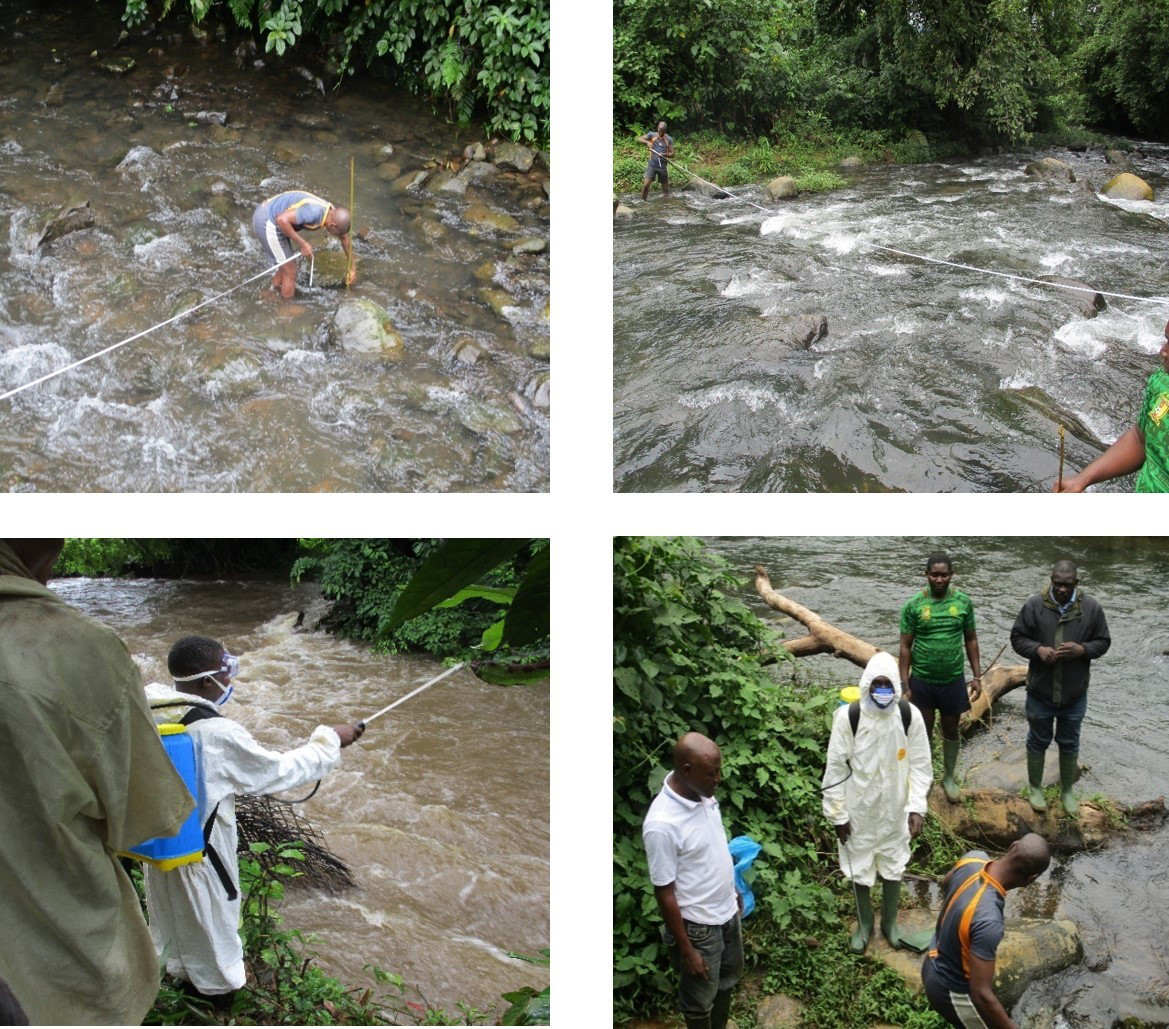
by Professor Samuel Wanji, Dr Peter Enyong, Andrew Amuam, Relindis Ekanya, Dr Louise Hamill, Dr Joe Turner
Preparations are proceeding at pace to control the local blackfly population in the South West Region of Cameroon. This is part of an integrated control strategy against river blindness implemented by the COUNTDOWN consortium, in partnership with the University of Buea, the Cameroon Ministry of Public Health and the Liverpool School of Tropical Medicine.
River blindness, also known as onchocerciasis, is a major health problem in the South West Region of Cameroon. It is transmitted by black flies when they bite humans to obtain a blood meal. There is an effective treatment for onchocerciasis in the form of Mectizan (ivermectin); this drug has been used successfully in many parts of sub-Saharan Africa and South America. However, in the South West Region of Cameroon, and other locations in Central Africa, Mectizan use is complicated by the presence of a second parasite; Loa loa. The latter can cause severe reactions to Mectizan in a small number of heavily infected individuals.
Onchocerciasis is currently targeted for elimination across all of Africa. For this to be achieved, different approaches that do not rely on Mectizan treatment are needed in areas where Loa loa and onchocerciasis are found together. COUNTDOWN are trialling the co-implementation of doxycycline, a drug that is effective against onchocerciasis and does not have any cross-reactivity with Loa loa, with localised reduction of blackfly populations, to further reduce transmission.
Controlling blackfly populations involves treating the rivers where the fly larvae are found; killing them before they have the chance to mature into adult blackflies and bite humans, thereby spreading the disease. To do this safely and effectively, key characteristics of the rivers in question must be carefully measured.
The research team from the University of Buea are working in collaboration with local communities to effect blackfly control, and give local people the skills, knowledge and training needed to measure key river characteristics. Volunteers to receive training on the measurement and treatment of rivers were selected in conjunction with the health system and community leaders in each location. These people received intensive training on measuring the velocity of water within the rivers, measuring the width and depth of the rivers, determining the discharge rate at a given point, application of treatments to rivers, and safety techniques throughout.

Figures: Volunteers receive riverside training in preparation for upcoming blackfly control activities
Training for all participants from the four different communities was very successful. Communities were enthusiastic about the training and the chance to combat onchocerciasis. As well as causing symptoms such as severe itching, dermatitis, visual impairment and blindness, blackfly biting is a real nuisance in these areas. Within the Meme River basin where this work will be conducted, one person can receive hundreds of blackfly bites every single day. Reducing this biting rate not only reduces the risk of contracting onchocerciasis, but also greatly reduces the irritation of black fly biting. This highlights the importance of this work not only in accelerating progress towards the eventual elimination of onchocerciasis, but also in improving the health and wellbeing of affected communities.
You can read more on our work relating to this intervention and the people behind it below:
Onchocerciasis in three decades: Through the lens of Prof Samuel Wanji
Onchocerciasis in three decades Part II: Building the next generation of parasitologists
